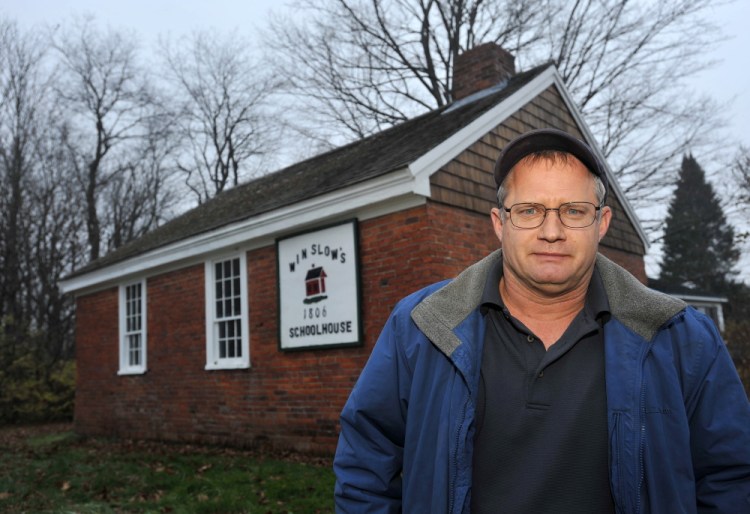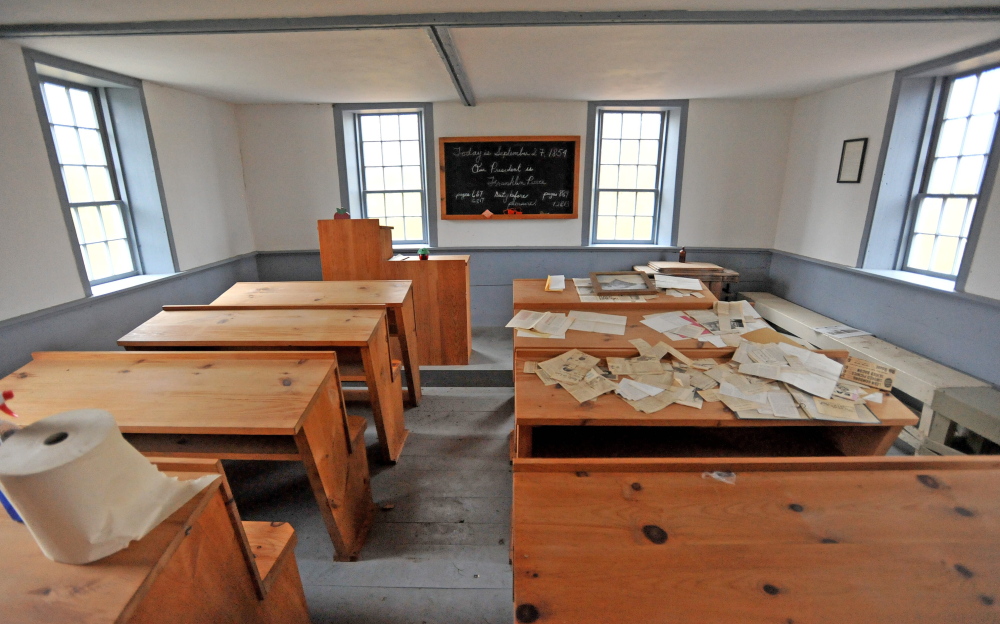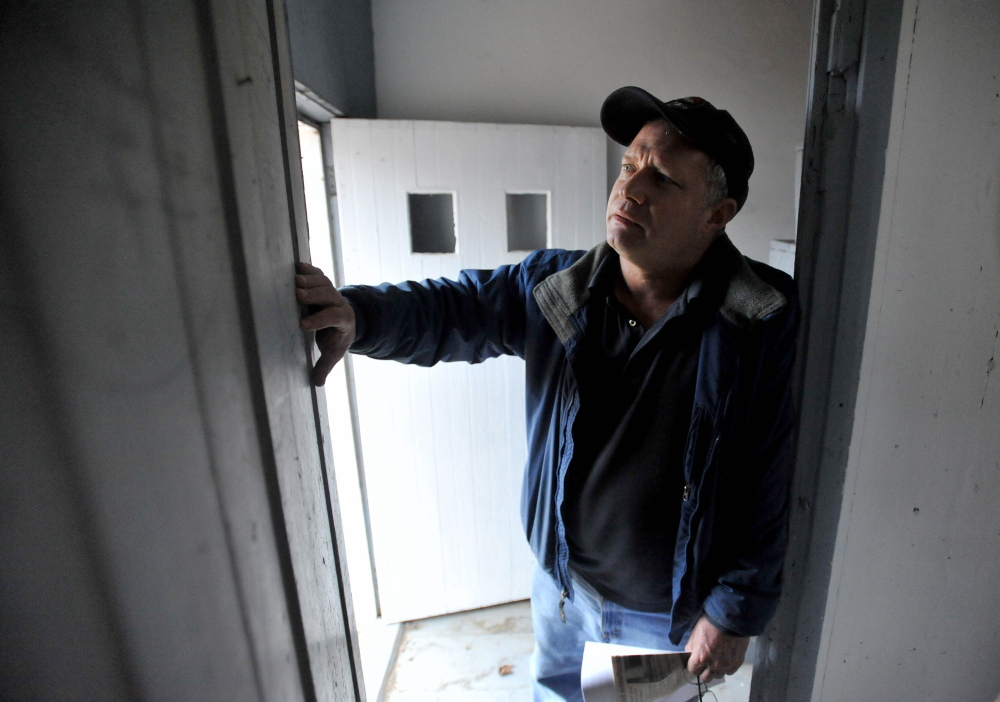WINSLOW — An 1800s-era brick schoolhouse on Cushman Road, on the verge of collapse decades after a restoration effort, could be conveyed to the town government and fixed up after a few thousand dollars’ worth of work, officials say.
But it’s not clear whether the Town Council is willing to accept and maintain the property.
“I’m not sure if we have the votes to send it over,” said Councilor Raymond Caron, a former vice president of the Winslow Historical Society.
Caron estimated the town would need to set aside $1,000 to $2,000 a year to keep the building in repair once current needs are addressed.
Town Manager Michael Heavener said the building needs masonry work to stop further deterioration and water infiltration. Estimates have pegged that work at $13,500 if the repairs are consistent with period of the building’s construction, but a estimate received Thursday by the town prices the work at $3,000 using modern masonry techniques. Caron said the building also needs about $500 worth of window repairs.
Built sometime between 1800 and 1810 by some of the area’s first settlers, the tiny structure is the oldest surviving brick schoolhouse in the state, according to the Maine Historic Preservation Commission.
More than two decades ago, the Winslow Historical Society saved the schoolhouse with a $20,000 restoration project. But the group has long since disbanded, and ownership of the property has reverted to the previous owner’s heirs, the grandchildren of Francis Giddings.
Heavener said the property owners, who owe about $200 in taxes on the land, have offered to convey ownership of the schoolhouse to the town, which would forgive the tax debt.
Depending on sponsorship by a councilman, Heavener said he anticipates the council will consider accepting ownership of the building during its meeting on Dec. 8.
But without a town historical society, town officials aren’t sure what the schoolhouse would be used for.
Winslow Elementary School officials have encouraged the council to restore the structure so it can be used for living history visits by students. They also suggested that it could be used as a meeting space for a student continental congress that is still in the planning phases.
“I certainly would support the idea that schoolhouse be available for the school system if it could fit into the town’s plan,” Principal Kyle Price said.
Caron said the building also could be opened to the public and historians brought in to speak there, as well as at other historic structures in Winslow, such as Fort Halifax.
Use of the schoolhouse by the elementary school raises questions about who should pay for the building’s upkeep. Councilor Ken Fletcher suggested that the school and the town share that expense in their budgets.
“If it is such an educational asset,” then the education budget should support it too, he said.
Even if the council does not accept the offer, the town might end up owning the property anyway. Heavener said if the taxes are not paid, the town would begin foreclosure proceedings in February.
Added to the National Register of Historic Places in 1977, the schoolhouse predates the incorporation of Winslow and the formation of the state of Maine. Part of the Kennebec Valley Land Trust issued by the state of Massachusetts to veterans of the American Revolution, its construction was a condition for settlers to accept the land. The state paid to staff the schoolhouse with a teacher.
Historians are not sure of the schoolhouse’s exact date of construction. It first appears in the Kennebec County Registry of Deeds in 1820. After its use as a school, it also served as general store and storage for a lumbering operation around 1913, Caron said.
The building features the original bricks, granite foundation and fieldstone fireplace as well as the original door and hinges. The door still bears the handwritten notes of items that were stored there, such as sacks of potatoes and lumber.
While historians have not been able to confirm one use of the property, Caron said some historical society members who are now dead recalled it was used as a morgue during the winter.
Caron said the town owes it to the people who helped preserve the historic structure to keep it intact for future generations. Many of those who worked to save the building are now dead, he said.
Evan Belanger — 861-9239
ebelanger@centralmaine.com
Twitter: @ebelanger
Send questions/comments to the editors.





Success. Please wait for the page to reload. If the page does not reload within 5 seconds, please refresh the page.
Enter your email and password to access comments.
Hi, to comment on stories you must . This profile is in addition to your subscription and website login.
Already have a commenting profile? .
Invalid username/password.
Please check your email to confirm and complete your registration.
Only subscribers are eligible to post comments. Please subscribe or login first for digital access. Here’s why.
Use the form below to reset your password. When you've submitted your account email, we will send an email with a reset code.